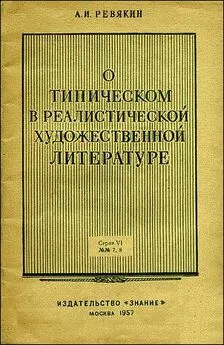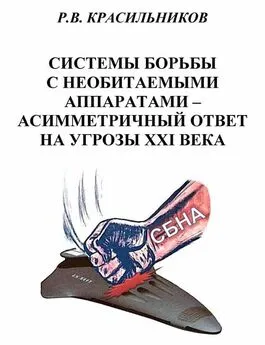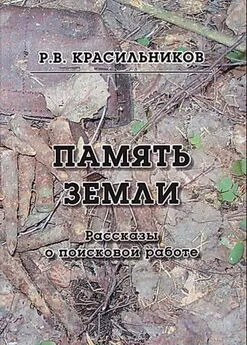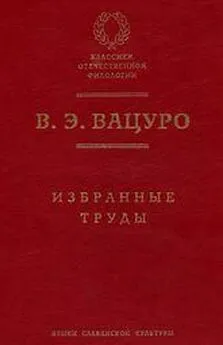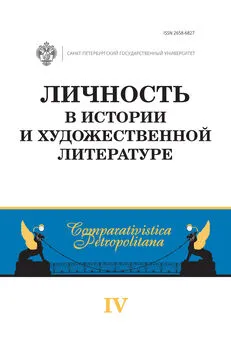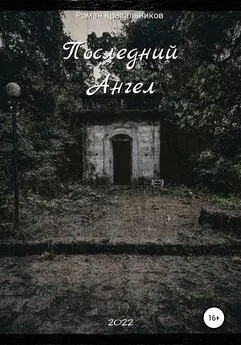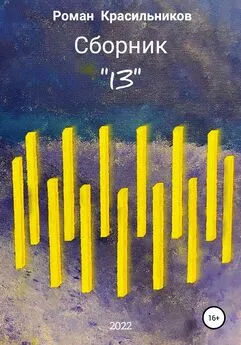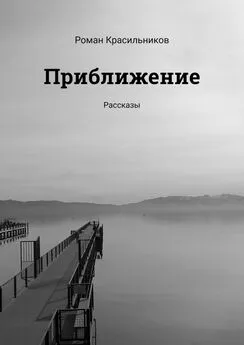Роман Красильников - Танатологические мотивы в художественной литературе [Введение в литературоведческую танатологию]
- Название:Танатологические мотивы в художественной литературе [Введение в литературоведческую танатологию]
- Автор:
- Жанр:
- Издательство:Литагент Знак
- Год:2015
- Город:М.
- ISBN:978-5-94457-225-7
- Рейтинг:
- Избранное:Добавить в избранное
-
Отзывы:
-
Ваша оценка:
Роман Красильников - Танатологические мотивы в художественной литературе [Введение в литературоведческую танатологию] краткое содержание
Танатологические мотивы в художественной литературе [Введение в литературоведческую танатологию] - читать онлайн бесплатно ознакомительный отрывок
Интервал:
Закладка:
Meier F. 2002 – Meier F. Sexualität und Tod: eine Themenverknüpfung in der englischen Schauerund Sensationsliteratur und ihrem soziokulturellen Kontext (1764–1897). Tübingen: Niemeyer, 2002.
Menninger 1938 – Menninger K. A. Man against Himself. New York: Harcourt, Brace, 1938.
Niermann 1988 – Niermann H. Untersuchungen zur Suizidthematik im französischen Roman zwischen 1925 und 1945. Münster: Lit, 1988.
Ottlinger 1996 – Ottlinger C. The Death Motif in the Poetry of Emily Dickinson and Christina Rossetti. Frankfurt am Main: Lang, 1996.
Pankratz 2005 – Pankratz A . «Death is… not»: Repräsentationen von Tod und Sterben im zeitgenössischen britischen Drama. Trier: WVT, Wiss. Verl. Trier, 2005.
Pippin 1992 – Pippin T . Death and Desire: the Rhetoric of Gender in the Apocalypse of John. Louisville, Ky.: Westminster, John Knox Press, 1992.
Priester 2001 – Priester K . Mythos Tod: Tod und Todeserleben in der modernen Literatur. Berlin: Philo, 2001.
Ramazani 1990 – Ramazani J. Yeats & the Poetry of Death: Elegy, Self Elegy, and the Sublime. New Haven: Yale Univ. Press, 1990.
Rehm 1967 – Rehm W. Der Todesgedanke in der deutschen Dichtung vom Mittelalter bis zur Romantik. Darmstadt: Wiss. Buchges., 1967.
Scherer 1979 – Scherer G . Das Problem des Todes in der Philosophie. Darmstadt: Wiss. Buchgesells., 1979.
Schneider 1973 – Schneider C. I . Das Todesproblem bei Hermann Hesse. Marburg: Elwert, 1973.
Schwebel 1876 – Schwebel O. Der Tod in deutscher Sage and Dichtung. Berlin: A. Weile, 1876.
Senelick 1987 – Senelick L. The Prestige of Evil: the Murderer as Romantic Hero from Sade to Lacenaire. New York, Garland, 1987.
Sepasgosarian 1991 – Sepasgosarian W. M . Der Tod als romantisierendes Prinzip des Lebens: eine systematische Auseinandersetzung mit der Todesproblematik im Leben und Werk des Novalis (Friedrich von Hardenberg). Frankfurt am Main: Lang, 1991.
Sex and Death 1990 – Sex and Death in Victorian Literature / Ed. R. Barecca. Houndmills; Basingstoke; Hampshire: Macmillan, 1990.
Sexau 1976 – Sexau R . Der Tod im deutschen Drama des 17. und 18. Jahrhunderts: (von Gryphius bis zum Sturm und Drang); ein Beitrag zur Literaturgeschichte. Hildesheim: Gerstenberg, 1976.
Shibles 1974 – Shibles W . Death: An Interdisciplinary Analysis. Whitewater, Wis.: Language Press: The Language Press, 1974.
Shneidman 1973 – Shneidman E. S . Death of Man. New York: Quadrangle, 1973.
Söller 2001 – Söller A . Der Tod in der Literatur und seine filmische Inszenierung am Beispiel der Literaturverfilmungen Rainer Werner Fassbinders. Frankfurt am Main: Lang, 2001.
Spencer 1936 – Spencer T . Death and Elizabethan Tragedy: a Study of Convention and Opinion in the Elizabethan Drama. Cambridge: Harvard Univ. Press, 1936.
Spoerri 1999 – Spoerri B . Der Tod als Text und Signum: der literarische Todesdiskurs in geistlich-didaktischen Texten des Mittelalters. Bern: Lang, 1999.
Steinert 1984 – Steinert H . Das Schreiben über den Tod: von Thomas Bernhards «Verstörung» zur Erzählprosa der siebziger Jahre. Frankfurt am Main: Lang, 1984.
Thanatologien, Thanatopoetik 2007 – Thanatologien, Thanatopoetik, der Tod des Dichters, Dichter des Todes (Tagung München 2006) / Hrsg. A. A. Hansen-Löve. München; Wien; Bamberg: Sagner, 2007.
The Meaning of Death 1959 – The Meaning of Death / Ed. H. Feifel. New York; Toronto; London: McGraw-Hill, 1959.
The New Encyclopaedia Britannica 1991 – The New Encyclopaedia Britannica. Chicago a. o.: Encyclopaedia Britannica, 1991.
The Oxford English Dictionary 1978 – The Oxford English Dictionary. Oxford: Clarendon Press, 1978.
The Thanatology Community 1992 – The Thanatology Community and the Needs of the Movement / Ed. E. J. Clark, A. H. Kutscher. New York: Haworth Press, 1992.
Todd 1993 – Todd J . Gender, Art and Death. Cambridge: Polity Pr., 1993.
Triller 1937 – Triller A . Tod und Jenseits bei Mikołaj Rej (1505–1569) und Jan Kochanowski (1530–1584). Stallupönen: Klutke, 1937.
Tristram 1976 – Tristram P . Figures of Life and Death in Medieval English Literature. New York: New York Univ. Press, 1976.
Valdés 1964 – Valdés M. J . Death in the Literature of Unamuno. Urbana: Univ. of Illinois Press, 1964.
Vermeule 1979 – Vermeule E. T . Aspects of Death in Early Greek Art and Poetry. Berkeley: Univ. of Calif. Press, 1979.
Weiblichkeit und Tod 1987 – Weiblichkeit und Tod in der Literatur / Hrsg. R. Berger. Köln: Böhlau, 1987.
Wentzlaff-Eggebert 1970 – Wentzlaff-Eggebert F.-W . Das Problem des Todes in der deutschen Lyrik des 17. Jahrhunderts. New York: Johnson, 1970.
Wentzlaff-Eggebert 1975 – Wentzlaff-Eggebert F.-W . Der triumphierende und der besiegte Tod in der Wortund Bildkunst des Barock. Berlin: de Gruyter, 1975.
Wheeler 1990 – Wheeler M. Death and the Future Life in Victorian Literature and Theology. Cambridge; New York: Cambridge Univ. Press, 1990.
Williams 1976 – Williams G. S. The Vision of Death: a Study of the «Memento Mori»; Expressions in Some Latin, German, and French Didactic Texts of the 11th and 12th Centuries. Göppingen: Kümmerle, 1976.
Wolfram 1986 – Wolfram S . Die tödliche Wunde: über die Untrennbarkeit von Tod und Eros im Werk von Klaus Mann. Frankfurt am Main: Lang, 1986.
Roman Krasilnikov
Thanatological motifs in literature (Introduction to philological thanatology)
The monography is a comprehensive research of the functioning of thanatological motifs in the fiction. Referring to the rich tradition of studying the problem of death in the humanitarian thanatology and literary criticism, the author identifies a specific area of knowledge – literary thanatology designed to identify and systematize thanatological elements in the literature. A supporting point for literary elaborations in this sphere is the theory of motive, which allows to focus on the role of one component of the text in organization of the work, the author’s creative system and even historically conditioned artistic paradigm. The logic of the study is dictated by the semiotic approach to motivic analysis: we study the semantics, the syntactic and the pragmatic of thanatological elements. In the context of these semiotic areas the features of representation of thanatological motives, their participation in organization of the plot, in creating of characters, interacting with different art paradigms, aesthetic categories, etc. are considered.
The book is addressed to philologists, philosophers and anyone interested in questions of literary criticism and humanitarian thanatology.
Примечания
1
Очевидно, что слово «танатологические» выглядит избыточным: точнее было бы сказать «танатические», ведь относительно антипода Танатоса – Эроса – свободно образуется прилагательное «эротический». Вместе с тем подобный казус, свидетельствующий о лингвистических причудах русского языка, наблюдается и в психологии, где часто смешиваются лексемы «психический» и «психологический». Заметим, что здесь также накладываются друг на друга понятия науки и ее объекта (общая психология – психология индивида), и адъектив, по всей видимости, образуется именно от второго термина.
2
Из специальных исследований, посвященных истории философской танатологии, см., например, [Choron 1967; Scherer 1979; Гагарин 2002; Иванюшкин 2011].
3
Этот постулат в том или ином виде встречается и у других философов – «Философия есть помышление о смерти» (Иоанн Дамаскин), «Философствовать – это значит учиться умирать» (М. Монтень).
4
В Оксфордском словаре упоминается книга Митчелла 1904 г., посвященная И. Мечникову, где отмечается возникновение двух научных направлений – о старении (геронтологии) и о смерти (танатологии) [The Oxford English Dictionary 1978, XI: 246].
5
Об активности танатологической дискуссии в естественных науках в 1920-е гг. можно судить также по работам А. Немилова [Немилов 1923] и И. Шмальгаузена [Шмальгаузен 1926].
6
См., например, критическую статью Ю. Давыдова о танатологических идеях З. Фрейда [Давыдов 1987].
7
Некоторые исследователи, наблюдающие за развитием танатологии со стороны, называют нынешний всплеск внимания к данной проблематике «танатологическим бумом», «танатоманией» [Каверина 2004: 3].
8
Это «стандартное» определение представляет собой перевод словарной статьи из энциклопедии «Британника» [The New Encyclodaedia Britannica 1991, XI: 672].
9
Свой вклад в развитие психологической танатологии (танатопсихологии) внесли такие российские ученые, как А. Баканова [Баканова 2014], В. Карандашев [Карандашев 1999], А. Налчаджян [Налчаджян 2004].
10
См. также диссертацию В. Варавы [Варава 2005]. Из других работ о современной танатологии отметим статьи В. Сабирова [Сабиров 2002] и С. Роганова [Роганов 2007], а также книгу И. Полотовской [Полотовская 2010].
11
Приведем хотя бы одно определение смерти, составленное лингвистом, изучившим различные словарные статьи: «В большинстве словарей и энциклопедий под смертью понимается необратимое, неизбежное и естественное прекращение жизнедеятельности организма и вследствие этого – гибель индивидуума как обособленной живой системы, сопровождающаяся образованием трупа и разложением биополимеров» [Тетерина 2006: 31].
Читать дальшеИнтервал:
Закладка:
![Обложка книги Роман Красильников - Танатологические мотивы в художественной литературе [Введение в литературоведческую танатологию]](/books/1069648/roman-krasilnikov-tanatologicheskie-motivy-v-hudozh.webp)
